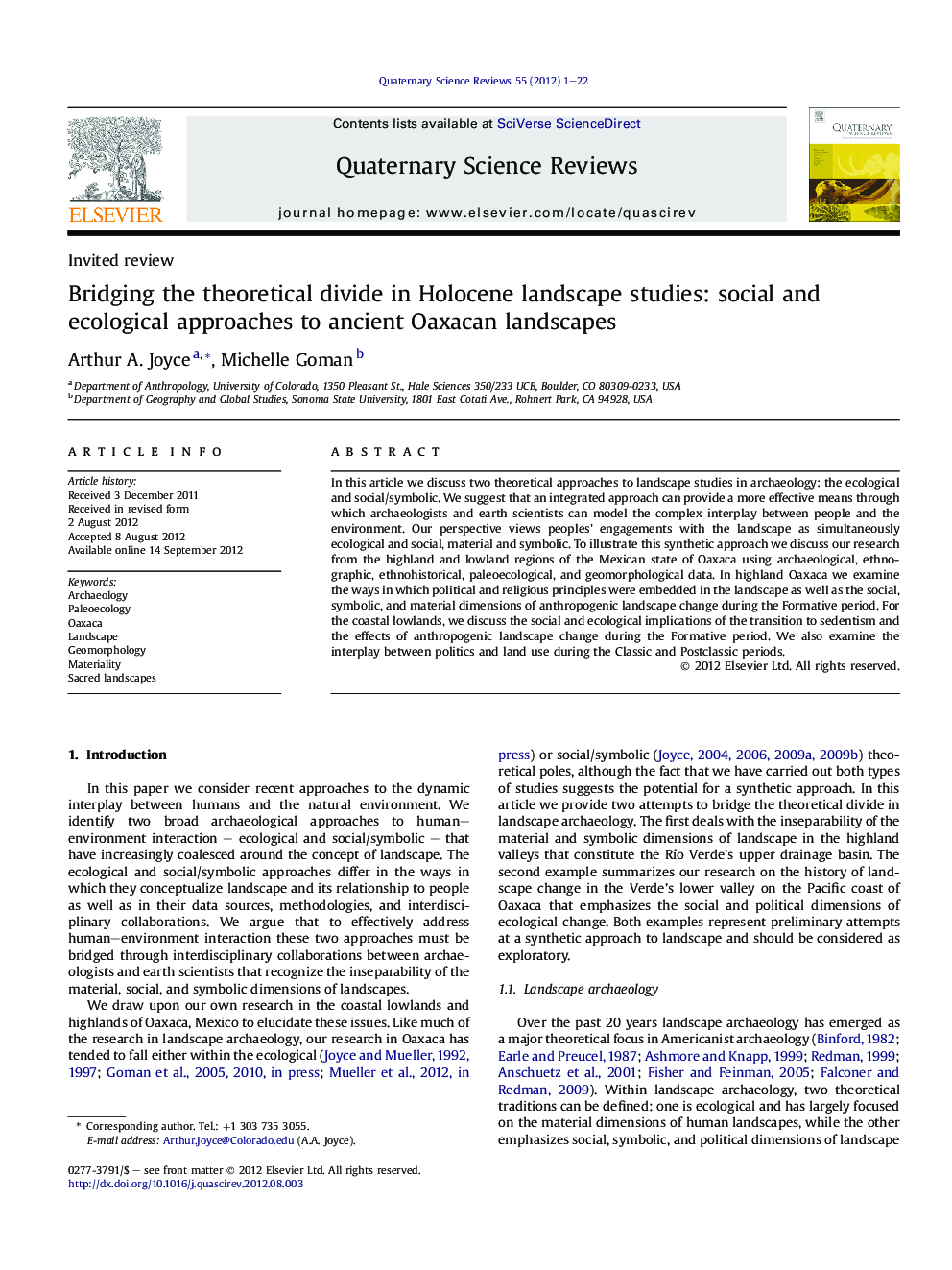| Article ID | Journal | Published Year | Pages | File Type |
|---|---|---|---|---|
| 4737180 | Quaternary Science Reviews | 2012 | 22 Pages |
In this article we discuss two theoretical approaches to landscape studies in archaeology: the ecological and social/symbolic. We suggest that an integrated approach can provide a more effective means through which archaeologists and earth scientists can model the complex interplay between people and the environment. Our perspective views peoples' engagements with the landscape as simultaneously ecological and social, material and symbolic. To illustrate this synthetic approach we discuss our research from the highland and lowland regions of the Mexican state of Oaxaca using archaeological, ethnographic, ethnohistorical, paleoecological, and geomorphological data. In highland Oaxaca we examine the ways in which political and religious principles were embedded in the landscape as well as the social, symbolic, and material dimensions of anthropogenic landscape change during the Formative period. For the coastal lowlands, we discuss the social and ecological implications of the transition to sedentism and the effects of anthropogenic landscape change during the Formative period. We also examine the interplay between politics and land use during the Classic and Postclassic periods.
